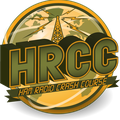 @Martin Mortensen There are many texting type of modes in ham radio, both VHF/UHF like we get access as technicians and HF where we can make longer distances contacts. One that comes to mind is APRS. Which can send multiple types of data.
@Martin Mortensen There are many texting type of modes in ham radio, both VHF/UHF like we get access as technicians and HF where we can make longer distances contacts. One that comes to mind is APRS. Which can send multiple types of data.
 @ashok das - Absolutely. CW punches through like nothing else. Requires almost no bandwidth.
@ashok das - Absolutely. CW punches through like nothing else. Requires almost no bandwidth.
 The 'trouble' I see in FT8 is that it is not conversational -- it is transactional. Which is fine if your goal is log contacts, but not particularly interesting in you want to engage. Speaking personally, if I just want to see my signal propagation, I have WSPR, and I don't have to worry about whether the other party chooses to engage.
The 'trouble' I see in FT8 is that it is not conversational -- it is transactional. Which is fine if your goal is log contacts, but not particularly interesting in you want to engage. Speaking personally, if I just want to see my signal propagation, I have WSPR, and I don't have to worry about whether the other party chooses to engage.
 @Ashok CW “goes further” because it takes up less bandwidth than voice. Further, its not as complex to hear, Dits or Dahs can be picked out of the noise by the human ear easier than the nuances of voice.
@Ashok CW “goes further” because it takes up less bandwidth than voice. Further, its not as complex to hear, Dits or Dahs can be picked out of the noise by the human ear easier than the nuances of voice.
 Ham radio used to require some technical interest (engineering, electronics) as you might need to build your own radio or repair it. So it would attract those sorts of folks. But then there's still something innately interesting to me at least about making contacts. There's something about Ham that's different than just calling up a friend to chat. The fact that both parties, by virtue of being "on the air" are saying they are open to making a new contact is what seems to draw me to it. I've been thinking a lot about why I find Ham Radio interesting. It doesn't make a ton on sense to a lot of my friends. So there's something deeper.
Ham radio used to require some technical interest (engineering, electronics) as you might need to build your own radio or repair it. So it would attract those sorts of folks. But then there's still something innately interesting to me at least about making contacts. There's something about Ham that's different than just calling up a friend to chat. The fact that both parties, by virtue of being "on the air" are saying they are open to making a new contact is what seems to draw me to it. I've been thinking a lot about why I find Ham Radio interesting. It doesn't make a ton on sense to a lot of my friends. So there's something deeper.
 @ziggurat29 Look into JS8CALL, its conversational FT8 basically.
@ziggurat29 Look into JS8CALL, its conversational FT8 basically.
![]() CW Ops is a tremendous organization to learn CW and link up with mentors and a training method. https://cwops.org/
CW Ops is a tremendous organization to learn CW and link up with mentors and a training method. https://cwops.org/
 @KI6NAZ Josh thanks I will
@KI6NAZ Josh thanks I will
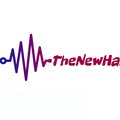 I was just getting ready to say that, JS8Call looks like the best of both worlds
I was just getting ready to say that, JS8Call looks like the best of both worlds
 Then there's the experimenting with antennas, and modes to see how far you can get a signal to reach. (back to the science stuff, vs personal relationship stuff).
Then there's the experimenting with antennas, and modes to see how far you can get a signal to reach. (back to the science stuff, vs personal relationship stuff).
 This week I've shared the article and HackChat link to:
This week I've shared the article and HackChat link to:
FB: "Team Rubicon Pacific Northwest (WA & OR)"
FB: "Team Rubicon Amateur Radio Operators"
FB: "King County C.E.R.T"
FB: "Pacific Northwest CERT"
FB: "PSRG Puget Sound Repeater Group"
FB: "Puget Sound Mike and Key"
Overall the biggest interest was in creating some joint "outreach" to schools and groups that is ACTIVE? One of the ways to keep such things active and mobile would be your local schools could write off a couple old buses for use as mobile ham training rigs that could visit schools on schedule to get the SCIENCE of radio and electronics back into the education system for early starters?!
 (our U.S. Navy needs to go back to teaching CW and celestial nav to sailors too)
(our U.S. Navy needs to go back to teaching CW and celestial nav to sailors too)
 @Andy C The cool part about radio is that you can do any and all of that. Building rigs or antennas. Or just making contacts. I really like to build antennas and that has given me a lot of joy.
@Andy C The cool part about radio is that you can do any and all of that. Building rigs or antennas. Or just making contacts. I really like to build antennas and that has given me a lot of joy.
 Despite all the people who say CW is "dead" it is amazing how often it pops up in non-ham places (e.g. TV programs, movies, commercials).
Despite all the people who say CW is "dead" it is amazing how often it pops up in non-ham places (e.g. TV programs, movies, commercials).
 @eric.j.brewer I’ve found that for most people showing live demonstration is what makes radio real. If you bring an experiment or something someone can go hands on with, its really becomes sticky to them and builds interest.
@eric.j.brewer I’ve found that for most people showing live demonstration is what makes radio real. If you bring an experiment or something someone can go hands on with, its really becomes sticky to them and builds interest.
 Here's the thing, though - are we going the wrong way by trying to concentrate on "texting you can do on ham radio"? I think so - they've already got a texting platform. Maybe we should concentrate on the non-conversational aspects - just the coolness factor of being able to put together a transmitter from a few parts and make a contact.
Here's the thing, though - are we going the wrong way by trying to concentrate on "texting you can do on ham radio"? I think so - they've already got a texting platform. Maybe we should concentrate on the non-conversational aspects - just the coolness factor of being able to put together a transmitter from a few parts and make a contact.
 RTL-SDR workshops help get kids involved too. They might not be interested in HAM at first, but learning to hack keyfobs and do bug detection, that sparks their interest
RTL-SDR workshops help get kids involved too. They might not be interested in HAM at first, but learning to hack keyfobs and do bug detection, that sparks their interest
 exactly- and seeing what @Kevin said backs up - you still see it on things like NCIS and such on TV. But where do people FEEL the hobby? Local county fair if lucky?
exactly- and seeing what @Kevin said backs up - you still see it on things like NCIS and such on TV. But where do people FEEL the hobby? Local county fair if lucky?
 @Dan Maloney I would agree. I like to sell it as Self-Supported communication. No one can take away what you know and how you operate. If its voice, or data, you’re in control and that brings some pride to it in seeing it all work.
@Dan Maloney I would agree. I like to sell it as Self-Supported communication. No one can take away what you know and how you operate. If its voice, or data, you’re in control and that brings some pride to it in seeing it all work.
 @KI6NAZ Josh - My dad and I are both hams. I once told him that they should call it Amateur Antenna, not Amateur Radio.
@KI6NAZ Josh - My dad and I are both hams. I once told him that they should call it Amateur Antenna, not Amateur Radio.
 I was just talking to James Aguirre, who is going to do Hack Chat soon on radio telescopes.
I was just talking to James Aguirre, who is going to do Hack Chat soon on radio telescopes.
Are hams involved in monitoring electromagnetic interference? The radio telescopes have to monitor from their sites, but need local verification of some transmitters. Ditto on SDR.

 @eric.j.brewer Ham radio got used in an episode of NCIS but they almost totally messed it up as they were mixing in aspects of CB radio with ham radio.
@eric.j.brewer Ham radio got used in an episode of NCIS but they almost totally messed it up as they were mixing in aspects of CB radio with ham radio.
 @GusGorman I agree, SDR receivers play a big role in demonstrating radio. They are cheap and give visual evidence that it is working. I have used SDR to display the waterfall of incoming SSTV images in classrooms and it makes real.
@GusGorman I agree, SDR receivers play a big role in demonstrating radio. They are cheap and give visual evidence that it is working. I have used SDR to display the waterfall of incoming SSTV images in classrooms and it makes real.
 There's been several in the cryptocurrency community that have taken an interest in HAM for off-grid transactions
There's been several in the cryptocurrency community that have taken an interest in HAM for off-grid transactions
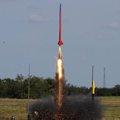 Hi Hosh
Hi Hosh
 @Kevin - I know I wince at many NCIS things they portray on TV. (To which I often wonder if they mislead by purpose?)
@Kevin - I know I wince at many NCIS things they portray on TV. (To which I often wonder if they mislead by purpose?)
![]() Josh, I'm interested in hearing more details about your opinion from the promo to this chat - that EMCOMM perhaps is not the savior of amateur radio and that potential hams could be more interested in joining amateur radio through things like SOTA. Could you please expand?
Josh, I'm interested in hearing more details about your opinion from the promo to this chat - that EMCOMM perhaps is not the savior of amateur radio and that potential hams could be more interested in joining amateur radio through things like SOTA. Could you please expand?
 @RichardCollins i used to work at the VLA (which employed tons of hams too). Many hams will use RDF to locate interference, especially when it impacts their repeaters.
@RichardCollins i used to work at the VLA (which employed tons of hams too). Many hams will use RDF to locate interference, especially when it impacts their repeaters.
 @RichardCollins I made a video recently on tracking down RFI at home. Hams are innately interested in tracking down interference whenever possible.
@RichardCollins I made a video recently on tracking down RFI at home. Hams are innately interested in tracking down interference whenever possible.
 solarcoin should be the unofficial digital exchange of ham radio!
solarcoin should be the unofficial digital exchange of ham radio!
 Using radio to make crypto transactions, I've had a few kids think that was cool
Using radio to make crypto transactions, I've had a few kids think that was cool
 @dean - to be clear, that was my position, not necessarily Josh's
@dean - to be clear, that was my position, not necessarily Josh's
![]() ah, thanks Dan
ah, thanks Dan
 I have to disagree somewhat that using the medium as a text-based mechanism is a distraction from the fundamental intent of ham. Ham is about communications, and whether that information is analog (phone) or numeric (digital) is orthogonal to the details of the art.
I have to disagree somewhat that using the medium as a text-based mechanism is a distraction from the fundamental intent of ham. Ham is about communications, and whether that information is analog (phone) or numeric (digital) is orthogonal to the details of the art.
 @Dan Maloney It is useful to point out that amateur radio operators can communicate with people that can't be reached by that thing they usually carry around in their pocket, or by regular landline telephone. Isolated islands or the ISS are a couple of examples.
@Dan Maloney It is useful to point out that amateur radio operators can communicate with people that can't be reached by that thing they usually carry around in their pocket, or by regular landline telephone. Isolated islands or the ISS are a couple of examples.
 I recently 3D printed a crude acoustic coupler for use with minimodem too. 3D modeling for antenna design too is also fun.
I recently 3D printed a crude acoustic coupler for use with minimodem too. 3D modeling for antenna design too is also fun.
 Also useful to point out its use in emergency situations.
Also useful to point out its use in emergency situations.
 @GusGorman the whole "pecuniary interest" rule is a huge grey area on using ham radio to transmit cryptocoins, and the FCC is slow to catch up on stuff like that
@GusGorman the whole "pecuniary interest" rule is a huge grey area on using ham radio to transmit cryptocoins, and the FCC is slow to catch up on stuff like that
 @GusGorman Transactions via ham may not be legal...
@GusGorman Transactions via ham may not be legal...
 @Sterling Hughes Jr. good advice
@Sterling Hughes Jr. good advice
 @Kevin - absolutely agree, but try to sell that to a kid who has never "suffered" from a day with Internet in his or her life. They won't believe something like that is even possible.
@Kevin - absolutely agree, but try to sell that to a kid who has never "suffered" from a day with Internet in his or her life. They won't believe something like that is even possible.
 I wonder if a copper water heating coil for a concrete rocket stove could function as an ultra low tech inductor in a 3rd world CW rig.
I wonder if a copper water heating coil for a concrete rocket stove could function as an ultra low tech inductor in a 3rd world CW rig.
 Nobody is making a profit off the transactions. You're basically sending a message, but it's digitally signed
Nobody is making a profit off the transactions. You're basically sending a message, but it's digitally signed
 @Dean Yes, EMCOMM was kind of pushed out to all as a big enticer to bring people in. It’s interesting, but with first responders communication methods today it is less powerful than it used to be.
@Dean Yes, EMCOMM was kind of pushed out to all as a big enticer to bring people in. It’s interesting, but with first responders communication methods today it is less powerful than it used to be.
In general, following the “self-supported” communication push I have been going on giving people the knowledge to do this on their own I feel has better capability to sticking with the newcomer. That is why I like events like Summits on The Air and Parks on The Air. Also, I find make a distribution between EMCOMM and Radio Prepping is important too.
 @Dan Twedt you said 'coil', so I think 'yes'; lol
@Dan Twedt you said 'coil', so I think 'yes'; lol
 @KI6NAZ Josh - I think I found a "solution" to helping with the RF Problem, but don't want to promote it here in this chat. Could I email you later? I'd love your thoughts.
@KI6NAZ Josh - I think I found a "solution" to helping with the RF Problem, but don't want to promote it here in this chat. Could I email you later? I'd love your thoughts.

 I'm going old school lol
I'm going old school lol


 @Andy C yes absolutely hoshnasi@gmail.com
@Andy C yes absolutely hoshnasi@gmail.com
![]() Hi Josh
Hi Josh
 Crude but effective. I get 300bps on it
Crude but effective. I get 300bps on it
 Hi!
Hi!
 separate acoustic cups are good too--radio shack used to sell.
separate acoustic cups are good too--radio shack used to sell.
 And so pastel...
And so pastel...
 EMCOMM Case in point: The wife was deployed to South Dakota with Team Rubicon to a large native reservation trying to inventory for flood control and repair. The systems they brought with were limited due to the CLOUD nature of the "Disaster Application" used (Palantir). When I read over the stuff included in these applications, it s the same stuff we use in WinLink for document sharing during quarterly disaster drills. Re-invent the wheel, but expect the wheel to have access to network full time? It's irritating to me - seeing how reliant local emergency services are on digital solutions and collapse when the power goes out. -_- This is actually why I got into HAM so I could at least fall back to something before being forced to use smoke signals. ;)
EMCOMM Case in point: The wife was deployed to South Dakota with Team Rubicon to a large native reservation trying to inventory for flood control and repair. The systems they brought with were limited due to the CLOUD nature of the "Disaster Application" used (Palantir). When I read over the stuff included in these applications, it s the same stuff we use in WinLink for document sharing during quarterly disaster drills. Re-invent the wheel, but expect the wheel to have access to network full time? It's irritating to me - seeing how reliant local emergency services are on digital solutions and collapse when the power goes out. -_- This is actually why I got into HAM so I could at least fall back to something before being forced to use smoke signals. ;)
 To go back to SDR a bit. Here was the byproduct of a 3d printed antenna I made and some copper plumbing last night.
To go back to SDR a bit. Here was the byproduct of a 3d printed antenna I made and some copper plumbing last night.

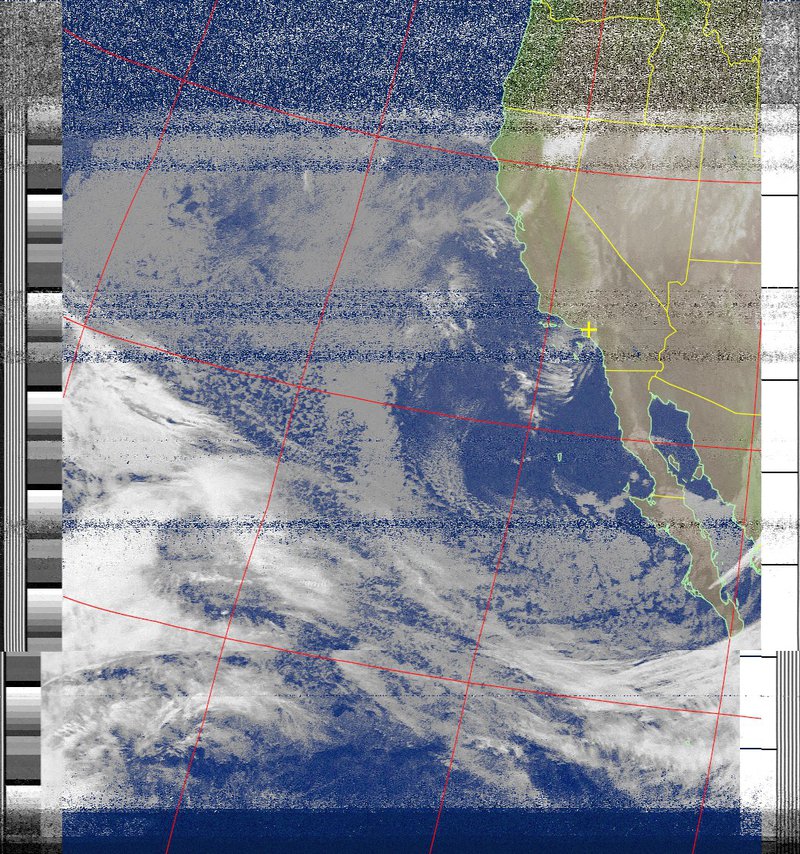
 i wish ham radio organizations would market the phrase "volunteer communications" instead of "public service" because we also do things like supporting bike races, parades, auto rallys, etc.
i wish ham radio organizations would market the phrase "volunteer communications" instead of "public service" because we also do things like supporting bike races, parades, auto rallys, etc.
 @GusGorman - I love the coupler!
@GusGorman - I love the coupler!
 300 baud is real time readable... I like.
300 baud is real time readable... I like.
 @Sterling Mann yes
@Sterling Mann yes
 I made a "BBS server" using Asterisk, PJSIP client, and minimodem
I made a "BBS server" using Asterisk, PJSIP client, and minimodem
 Is that NOAA? or maybe METEOR?
Is that NOAA? or maybe METEOR?
 NOAA
NOAA
 damN! I wish I could get that good of quality out of my SatNOGs
damN! I wish I could get that good of quality out of my SatNOGs
 APT?
APT?
![]() Nice grab from the WX Sat! - AD7C
Nice grab from the WX Sat! - AD7C
 I should point out that leveraging the Raspberry Pi into ham radio has been awesome. My current VHF packet radio station is using a Pi 4 and its awesome.
I should point out that leveraging the Raspberry Pi into ham radio has been awesome. My current VHF packet radio station is using a Pi 4 and its awesome.
 err, not APT?
err, not APT?
 KI6NAZ I don't remember how to reply just to you. Can you send me a note about the video?
KI6NAZ I don't remember how to reply just to you. Can you send me a note about the video?
I do not know what VLA is. Thanks I am interested in building a global map of the electromagnetic field potential. It would cover roughly from microHertz to MegaHertz for the slowly varying parts of the field, and then all the individual frequency power variations. Only been looking at groups since last summer.
 Been wanting to try Wx sat image grabs for a while now.
Been wanting to try Wx sat image grabs for a while now.
 @RichardCollins That might be a bit beyond me. My tracking of RFI has been mainly to find find nasty RFI generators and kill them :D
@RichardCollins That might be a bit beyond me. My tracking of RFI has been mainly to find find nasty RFI generators and kill them :D
 The Russian periodically send slow scan still images from the ISS. It is good fun to capture them
The Russian periodically send slow scan still images from the ISS. It is good fun to capture them
 KM4ACK has a good series on YouTube about Raspberry Pi for ham radio
KM4ACK has a good series on YouTube about Raspberry Pi for ham radio
 @KI6NAZ Josh can you please say something about the RPiTX. I think it is a viable method if used properly.
@KI6NAZ Josh can you please say something about the RPiTX. I think it is a viable method if used properly.
 morgan! still having issues?? :(
morgan! still having issues?? :(

 KM4ACK is the ham radio Raspberry Pi Guru
KM4ACK is the ham radio Raspberry Pi Guru
 Tracking radiosondes, scavenger hunt style. That might get kids involved
Tracking radiosondes, scavenger hunt style. That might get kids involved
![]() Yes we don't like RFI it's the enemy
Yes we don't like RFI it's the enemy
 @Corey Shields Not so much, but I have yet to pull an image like above
@Corey Shields Not so much, but I have yet to pull an image like above
 I can reliably pull APT though
I can reliably pull APT though
 Coming from a digital attitude (and in keeping with the topic of 'making ham relevant now'), I think the restrictions on encryption are hobbling. I do very much appreciate that the essence of ham is open-ness, and that encryption seems to run against that openness, but I think that these restrictions should be relaxed in some way. I think such relaxation will get a lot more folks interested in being able to set up interesting and novel hardware/software.
Coming from a digital attitude (and in keeping with the topic of 'making ham relevant now'), I think the restrictions on encryption are hobbling. I do very much appreciate that the essence of ham is open-ness, and that encryption seems to run against that openness, but I think that these restrictions should be relaxed in some way. I think such relaxation will get a lot more folks interested in being able to set up interesting and novel hardware/software.
![]() Eric and Josh, thanks for sharing your EMCOMM thoughts
Eric and Josh, thanks for sharing your EMCOMM thoughts
 these days the issues are power/network up the tower
these days the issues are power/network up the tower
 Much of our local community is very vocally up in arms about 5G cell antenna rollouts... Could be another ham opening somehow.
Much of our local community is very vocally up in arms about 5G cell antenna rollouts... Could be another ham opening somehow.
 I will say with the changing interests of people, the sake of doing ham radio to make contacts has dwindled some. It more or less seems that people are looking to ham radio to solve logistics problems with the projects. Like longer comms over that of license free modes like FRS, etc. If you can adapt ham radio into what people are interested in, it seems to do very well.
I will say with the changing interests of people, the sake of doing ham radio to make contacts has dwindled some. It more or less seems that people are looking to ham radio to solve logistics problems with the projects. Like longer comms over that of license free modes like FRS, etc. If you can adapt ham radio into what people are interested in, it seems to do very well.
 @ziggurat29 - Just curious, where do you see the rules against encryption hindering?
@ziggurat29 - Just curious, where do you see the rules against encryption hindering?
 I think the real problem with encryptiong is verifying if an encrypted transmission on amateur radio is actually following the rules.
I think the real problem with encryptiong is verifying if an encrypted transmission on amateur radio is actually following the rules.
 Encryption works against Spread Spectrum for example.
Encryption works against Spread Spectrum for example.
 the problem @ziggurat29 is that how do we know who is transmitting is a licensed ham if its encrypted?
the problem @ziggurat29 is that how do we know who is transmitting is a licensed ham if its encrypted?
 @Sterling Mann indeed!
@Sterling Mann indeed!
 you cant tell if it's a business stealing the spectrum, or a ham opening a ham radio forum webpage over AREDN
you cant tell if it's a business stealing the spectrum, or a ham opening a ham radio forum webpage over AREDN
 I think that the prohibition on encryption is part of the reason that countries all over the world allow amatuer radio. No secret messages
I think that the prohibition on encryption is part of the reason that countries all over the world allow amatuer radio. No secret messages
 That is one of the issue Winlink is facing. It’s great for transmitting data, but due to encoding, its hard to be considered “in the open”
That is one of the issue Winlink is facing. It’s great for transmitting data, but due to encoding, its hard to be considered “in the open”

 Lutetium
Lutetium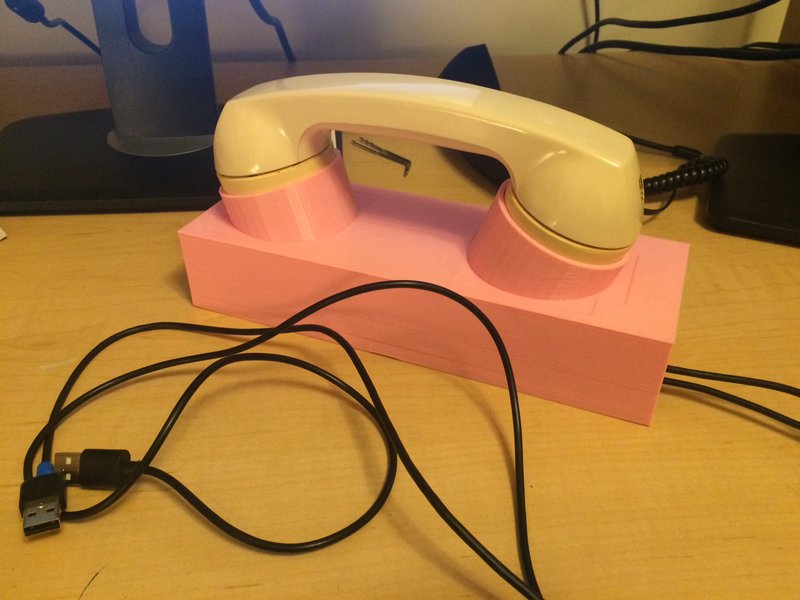
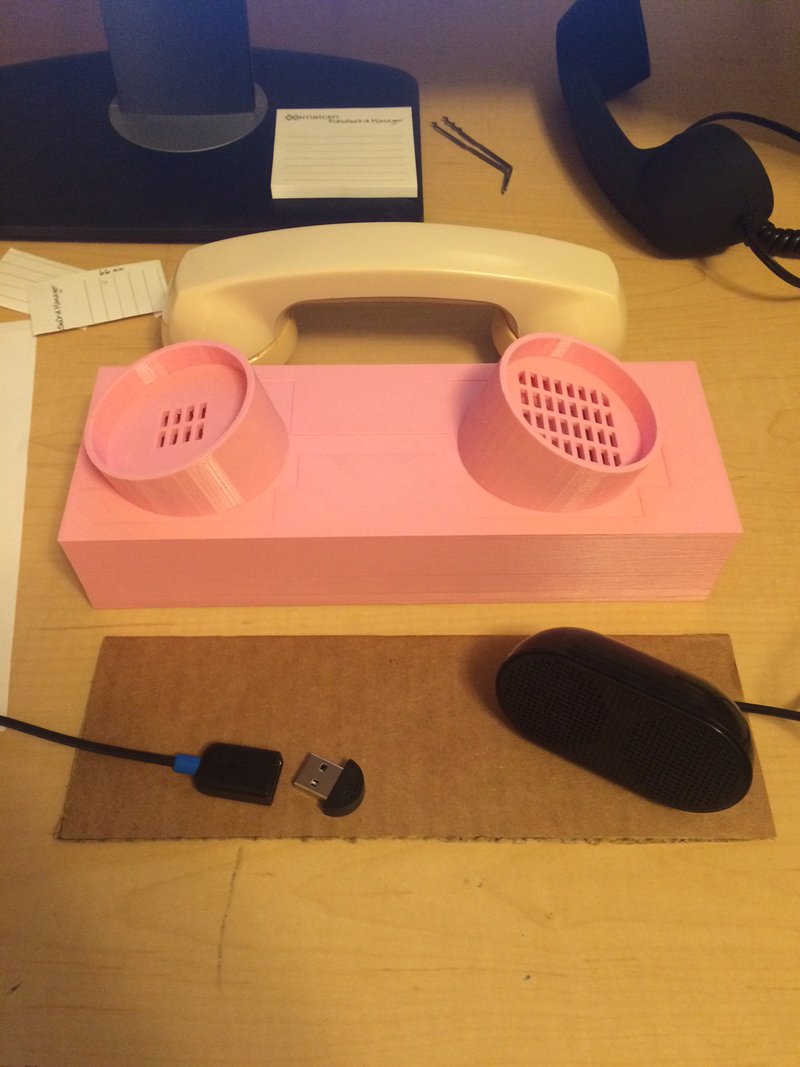
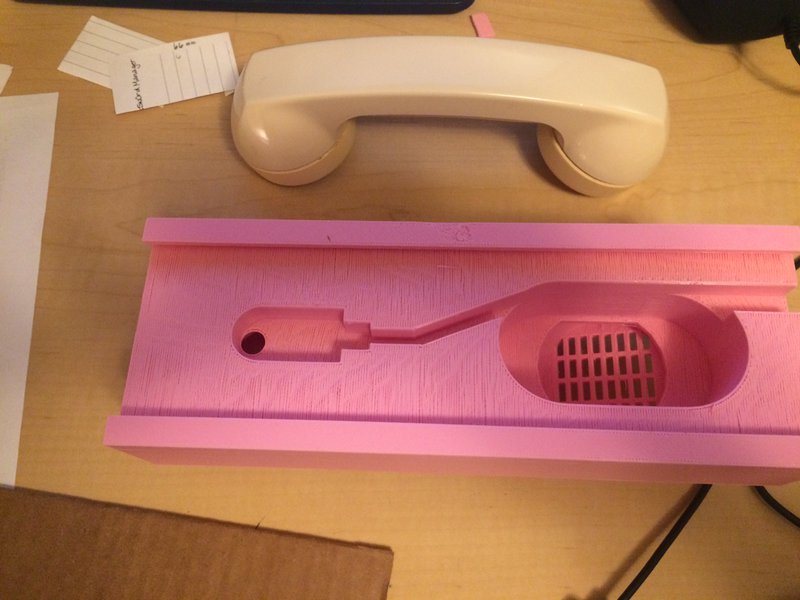
Discussions
Become a Hackaday.io Member
Create an account to leave a comment. Already have an account? Log In.